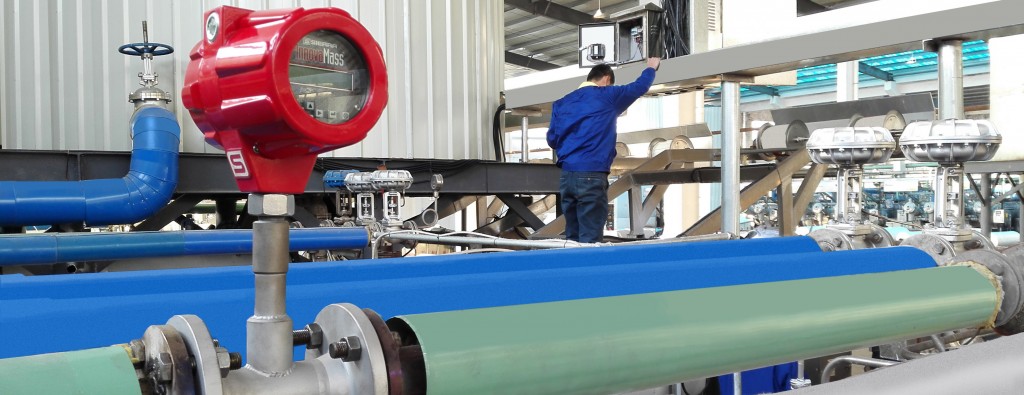
For Vortex Flow Meters, Accuracy Matters in Steam Energy Flow Measurement


The heat is on. Most facilities managers are in the hot seat to account for all of the flow energy, going in and out of their facility which is no easy task. This mandate is no different for steam flowmeter measurement.
Vortex flow meters continue to be the industry standard selection for accurate steam flow measurement for steam systems and boilers. Despite this fact, there is a common debate about vortex mass flow meters versus vortex volumetric flow meters: Which type of steam flow meter is most accurate and maximizes steam productivity best?
Most steam condensate measurement flowmeters measure volumetric flow and many facilities managers are operating under the assumption that:
- We don’t need compensation on our steam energy application because the pressure only varies by 10%.
- We use a volumetric vortex meter with a constant density programmed for the mass flow calculations.
The physics tells us that when temperature and pressure change in the line mass flow also changes quite dramatically. Let’s see why. Volumetric vortex flow meters use density to calculate the mass flow. Density is mass per unit volume, therefore, mass is density times volume. If density changes, the mass flow must change. Density is a function of temperature and pressure, if those change, the mass flow changes, sometimes by quite a lot. Here are some typical values for saturated steam density:
- 125 psig steam typically 0.3 lbm/ft3
- 15 psig steam typically 0.07 lbm/ft3
- 225 psig Steam typically 0.52 lbm/ft3
You can see the importance of knowing the temperature and, especially the pressure or horsepower, of your steam. This can actually lead to significant errors in steam flow measurement costing you money and process inefficiencies. In fact, a good rule of thumb is a 10% change in steam pressure equals a 10% error in the non-compensated mass flow! This means that you are losing 10% of your steam productivity and reducing dollars due to wasted energy.
The above analysis demonstrates that for the most accurate measurement you need a multivariable measurement, one that measures not just volumetric flow (like commonly used orifice plates or other differential pressure meters), but also actively measures temperature and pressure and maintains system accuracy with a single unit (instead of compensating for pressure and temperature with multiple components).
Sierra’s new InnovaMass iSeries mass vortex flow meter comes in both configurations, an economical volumetric flow meter and a multivariable mass flow meter that provides a steam accuracy of 1% of reading, 30:1 turndown plus pressure and temperature compensation. This multivariable vortex flow meter assures the flow meter’s density calculations are correct, and therefore, your steam flow measurement is correct maximizing your steam productivity on your industrial or culinary boiler. Learn more about Sierra and our new clean InnovaMass multivariable mass flow meter.
Let us know of some of your steam flow and flowmeter challenges and our steam flow experts can offer some tips.
 Go to Autotest Division >
Go to Autotest Division >